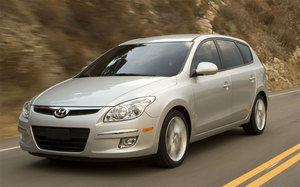For many years, the Metropolitan Transit Authority of New York City has been extending Paratransit service to its disabled customers (Metropolitan Transit Authority, 2012). This service, called “Access-A-Ride” (Metropolitan Transit Authority, 2012, “What is Paratransit Service?”), falls into line with the “Americans with Disabilities Act (ADA)” (Metropolitan Transit Authority, 2012, “What is Paratransit Service?”). However, Access-A-Ride has its pros and cons, all of which must be weighed.
There is some freedom allotted to Access-A-Ride users. The service runs “24 hours a day, 7 days a week” (Metropolitan Transit Authority, 2012, “Hours of Operation”). If a rider frequents a certain location at a specific time at least once a week, then he or she may ask for “Subscription Service” (Metropolitan Transit Authority, 2012,”Subscription Service”), which basically amounts to a standing order.
Access-A-Ride’s patrons can use the service to travel throughout all of New York City (Metropolitan Transit Authority, 2012). This makes Access-A-Ride very useful for long – distance trips in the city. I like to use it this way, because the same trips through town would be longer and more expensive otherwise. The cost of a trip is just $2.25 each way. Your Personal Care Assistant can travel for free if you can demonstrate needing their help (Metropolitan Transit Authority, 2012). You do have to pay the going fare to bring a guest along, though. Some bigger and more important locations around the city have designated bus stops for Access-A-Ride, so that you and your driver don’t miss each other (Metropolitan Transit Authority, 2012).
There are some factors which may deter would-be users from Access-A-Ride. You can only pay the fare in cash, and you need to use exact change (Metropolitan Transit Authority, 2012). It can be difficult and annoying to go to the ATM machine and break a large bill just for that. I know that it gets on my nerves. Providing the option of electronic payment would help to mitigate this problem. The Metropolitan Transit Authority has tested the feasibility of using debit cards for this purpose (Kabak, 2011).
Access-A-Ride users have to call to reserve a trip “one-to-two days in advance” (Metropolitan Transit Authority, 2012,”How to Reserve a Trip”), and that can only be done during a certain window of time during the day. You have to do your best to work with the travel time that you are given, and “be prepared to wait up to 30 minutes.” (Metropolitan Transit Authority, 2012,”On the Day of Your Trip”) That is a long time to wait if you have doctor’s appointments or school to worry about. What I don’t like is telling Access-A-Ride that I will be ready to head home by a certain time, and having to wait up to forty -five minutes longer than that. On several occasions, I have been irate enough with the service to seek another way to get around. The problem with that is that there is not much to speak of with regard to recourse.
I tried to use Subscription Service myself. I thought that it would make it easier to get to school on time. I had to cancel the subscription, because so much was out of my hands and unpredictable that I was often late. A ride with Access-A-Ride to my school takes fifteen or twenty minutes. Taking a city bus to the same location takes forty five minutes. I was faced with this during the Spring 2012 semester.
No matter how long you have to wait for them, a driver will only wait for you for a few minutes (Metropolitan Transit Authority, 2012). A missed ride will count against your record as a violation (Metropolitan Transit Authority, 2012). If that happens often enough, your service may be suspended. The same may happen if you try to cancel or reschedule a trip less than three hours before the scheduled time (Metropolitan Transit Authority, 2012). It’s not like a taxi service; you can’t just call for a new one when you’re ready. A disabled person could get stranded that way.
As it is, Access-A-Ride is very expensive to run. The expected cost to the MTA is about “$66 a trip” (Donohue, 2012, par. 6), whereas a comparative Taxi service “will save $34 a trip” (Kabak, 2011, par. 5). Access-A-Ride isn’t entirely disposable, but a more modern taxi fleet will serve to be a long overdue step towards normalcy and dignity for the disabled citizens of New York City. The freedom to move about the world should not rest on one thin thread. Like everyone else, disabled citizens should have the safety net of a more accessible taxi service, so that they will not have to be at the mercy of a hit-or-miss paratransit system.
Sources: Donohue, Pete. “Move to give free MTA passes to the disabled.” NYDailyNews.com. New York Daily News, 23 Apr 2012. Web. 21 Jun, 2012. http://articles.nydailynews.com/2012-04-23/news/31388524_1_access-a-ride-ridership-mass-transit-disabled-riders
Kabak, Benjamin. “Accessible taxis could reduce Access-A-Ride costs.” 2nd Ave. Sagas. Second Ave. Sagas, 29 Dec 2011. Web. 21 Jun, 2012. “Guide to Access-A-Ride Service.” MTA.Info. Metropolitan Transit Authority, 2012. Web. 21 Jun 2012. http://secondavenuesagas.com/2011/12/29/accessible-taxis-could-reduce-access-a-ride-costs/
“Guide to Access-A-Ride Service.” MTA.Info. Metropolitan Transit Authority, 2012. Web. 21 Jun 2012. http://www.mta.info/nyct/paratran/guide.htm





